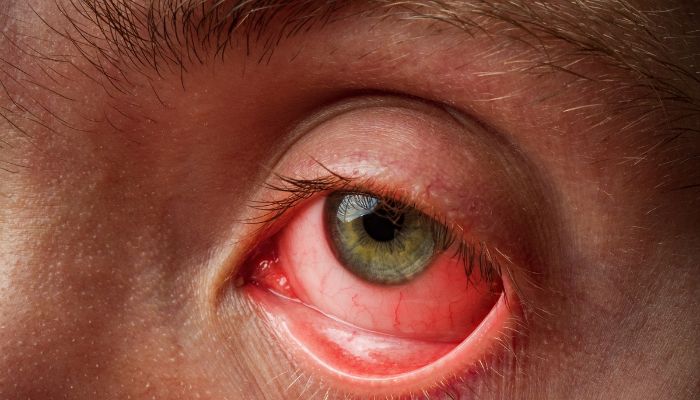Worry about your concern!!
Online consultation · Starts at just ₹199
Consult with top specialist doctors in their fields


Conjunctivitis: Causes, Symptoms and Treatment
What is Conjunctivitis?
Conjunctivitis, sometimes referred to as pink eye or red eye, is the inflammation of the translucent membrane lining the white portion of the eye and the inside of our eyelids. It is the conjunctiva that keeps your eyes moist. When it's infected, the white portion of your eye turns bright red due to swelling blood vessels. Small blood vessels in the conjunctiva become more noticeable as they swell and become inflamed. This is the reason why the whites of the eyes seem pink or red. Either one eye or both eyes may be affected by pink eye.
What Causes Pink Eye?
- Bacteria: Using contaminated face creams or cosmetics, touching eyes with dirty hands, or physical contact can all spread bacteria to one or both eyes.
- Viruses: The common cold, upper respiratory tract infections, and, less frequently, herpes and sexually transmitted infections, can all be brought on by viruses.
- Chemicals: Air pollution, chlorine in swimming pools, cosmetics for the face or eyes, and other harmful substances can irritate or inflame one or both eyes.
- Allergic: When your conjunctiva reacts to anything you're sensitive to, such as dust, mold, or pollen, it's known as allergic conjunctivitis. Your eye becomes irritated, puffy, and red.
Symptoms and Causes
- Produce pus that sticks to lashes.
- Crusting on your eyelids or lashes may result from ocular discharge, which is often thicker than normal tear fluid and can be yellow, green, or white.
- One or both eyes may be red.
- Itchiness in one or both eyes.
- Photophobia is the sensitivity to light.
- Swelling of the eyelids (blepharitis).
- Blurry vision.
- Watery eyes or tears.
Treatment
Not every type of pink eye is communicable or necessitates medical attention. The symptoms of the different forms of conjunctivitis can be lessened with these over-the-counter and prescription treatments:
- Treatments for allergic conjunctivitis often include:
- Cold compress with eye drops.
- Allergy immune treatment with artificial tears.
- Consume vitamin C and vitamin A for healthy eyes and a strong immune system.
- Eye drops, ointments, or tablets containing antibiotics are used to treat bacterial conjunctivitis.
- Use a moist towel to wipe your eyelids.
When to Consult a Physician
- Growing discomfort or hazy eyesight.
- Feeling like there’s something stuck in your eye.
- Eye pain.
- High light sensitivity.
- Symptoms that have persisted for a week or more, or that keep getting worse.
- Too much mucus or pus in the eye.
Prevention
- When you're outside, use sunglasses or eyeglasses to help shield your eyes from particles like pollen.
- Keep animals out of your bedroom and wash your hands after handling them.
- Keep your car and house windows and doors closed, especially during pollen season.
- Never share items related to eye grooming and hygiene.
- Refrain from applying eye makeup until the infection clears up.
Duration of Conjunctivitis
Conjunctivitis typically heals in five to seven days, but it can take up to two weeks to fully recover. Treatment with antibiotics or antivirals is not necessary in nearly two-thirds of cases. Nonetheless, it is important to schedule a consultation with your physician for a diagnosis and adhere to the recommended course of therapy.
Key Points About Conjunctivitis
- Conjunctivitis can have bacterial, viral, chemical, or allergic causes.
- Symptoms include redness, discharge, swelling, and sensitivity to light.
- Prevention includes proper hygiene and avoiding allergens.


